Introduction
In the rapidly evolving e-commerce landscape, chatbots have become more than just virtual assistants; they are revolutionizing the way businesses connect with consumers. With over 88% of users engaging with chatbots in 2022, these AI-powered tools have proven to be indispensable in providing round-the-clock support and enhancing the customer experience. The integration of chatbots has also demonstrated a significant impact on revenue, with 76% of decision-makers witnessing an 11% increase in sales after leveraging AI in areas like customer support and personalization.
E-commerce platforms are adapting to this AI surge, automating up to 70% of customer requests, effectively addressing the demand for instant and personalized customer service. As the use of chatbots becomes a strategic necessity, businesses are ensuring they stay competitive and responsive to customer needs.
The Role of Chatbots in E-commerce
In the rapidly evolving e-commerce landscape, the role of chatbots has transcended basic customer interactions. These AI-powered virtual assistants are revolutionizing the way businesses connect with their consumers. With over 88% of users engaging with chatbots in 2022, these tools have proven to be indispensable in providing round-the-clock support and enhancing the customer experience.
Furthermore, the integration of chatbots has demonstrated a significant impact on revenue, with 76% of decision-makers witnessing an 11% increase in sales after leveraging AI in areas like customer support and personalization.
E-commerce platforms are now adapting to this AI surge, automating up to 70% of customer requests, effectively addressing the demand for instant and personalized customer service. Retail companies that have embraced this trend are not only improving customer satisfaction but also seeing substantial growth in their market presence. With Ai's potential to expand e-commerce teams and elevate the entire value chain, the use of chatbots is fast becoming a strategic necessity, ensuring businesses stay competitive and responsive to customer needs.
Benefits of Chatbot Integration in E-commerce
The integration of chatbots within the e-commerce landscape is revolutionizing customer service. In a dynamic market, instantaneity is key; chatbots excel in delivering real-time responses to customer queries, streamlining their shopping experience. Not only do they enhance efficiency by addressing multiple queries simultaneously, but their ability to offer personalized assistance further elevates the customer journey.
Chatbots are also formidable data collectors, providing e-commerce businesses with actionable insights. This data informs marketing strategies, aligning them more closely with customer preferences and behaviors. For instance, a global jewelry brand with a vast market presence utilized chatbot technology to provide seamless support across various time zones, ensuring that no customer inquiry went unanswered, regardless of location or time.
The success of chatbots is underscored by statistics showing a 92% increase in their deployment across websites and apps, reflecting their growing importance in customer-business interactions. With 88% of users engaging with chatbots in 2022, their role in facilitating 24/7 customer service is becoming a standard expectation.
Moreover, retail companies that leverage AI, including chatbots, witness customers willing to pay premiums of up to 16% for superior service. The investment in AI and chatbots is substantiated by a significant uptick in adoption, with over 63% of retail companies using AI to enhance customer service, and many dedicating specialized teams and budgets towards this technology.
The trend is clear: integrating chatbots is not just about keeping pace with technological advancements but about actively shaping a customer service model that is both efficient and personalized, ultimately driving customer satisfaction and loyalty.
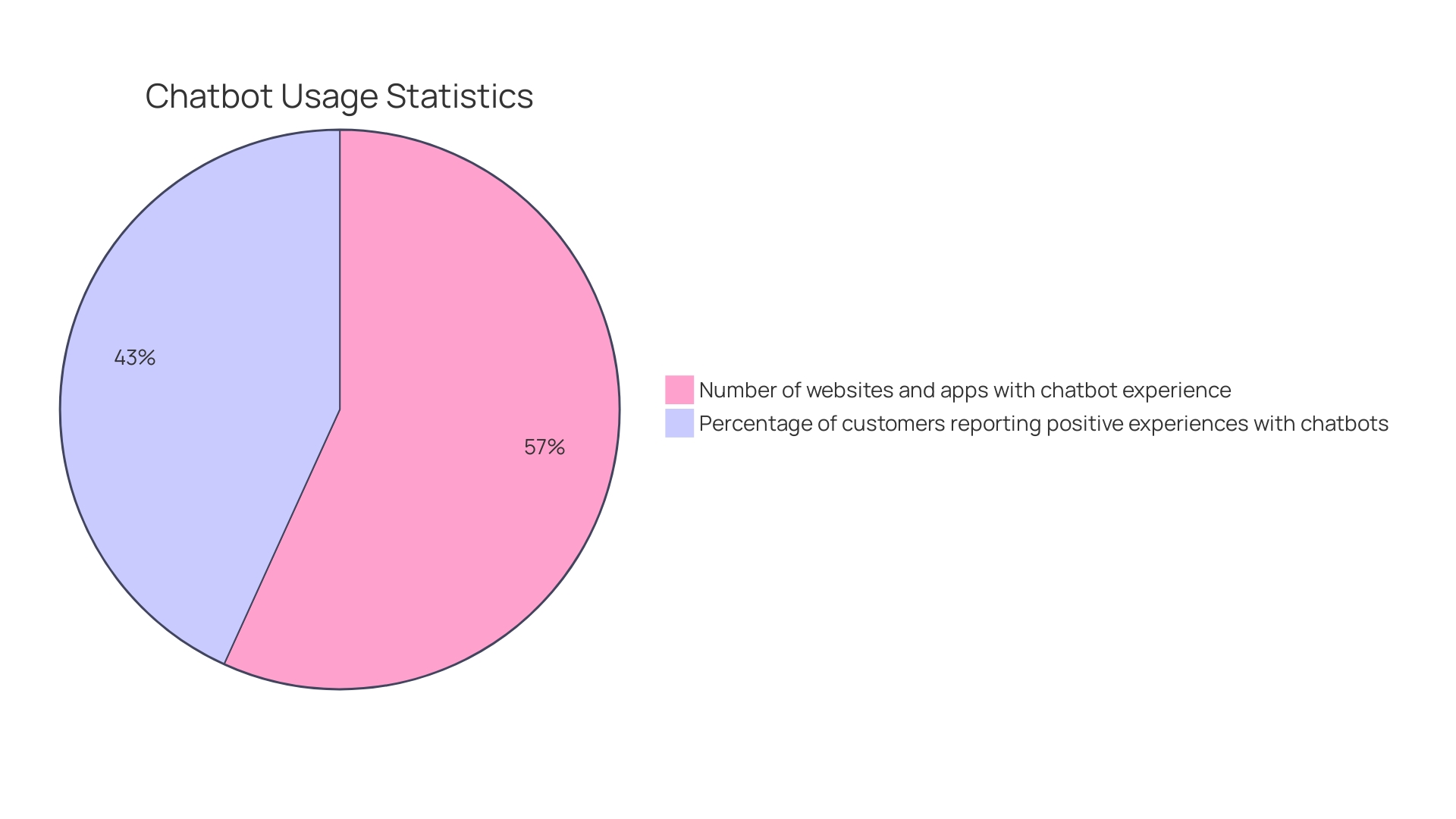
Case Study: Successful Chatbot Integration Examples
Examining the success of chatbots in e-commerce reveals that these AI-driven tools are more than just a trend; they're a transformative element in customer service strategy. Take, for instance, a leading fashion retailer that saw a surge in customer satisfaction after deploying a chatbot to guide product selection and track orders. The bot's personalized suggestions, based on user history and preferences, led to streamlined service and more precise orders.
In another case, a prominent electronics e-commerce site set a chatbot to resolve customer issues and provide technical support. Customers enjoyed immediate help with common troubleshooting, significantly cutting down on wait times and elevating user satisfaction. These instances highlight the chatbot's ability to deliver timely, personalized assistance.
Statistics underscore this narrative, with over 63% of retail companies utilizing AI to enhance customer service and a staggering 88% of users engaging with chatbots in 2022. The urgency for integration is clear as AI and chatbots become integral in the customer-business communication loop, available around the clock to meet demand.
Moreover, the chatbot market is expanding rapidly, with a 92% increase in chatbot-enabled websites and apps, reflecting a broader adoption across industries. Such growth is in response to consumer behavior, as nearly 78% of shoppers have dropped a purchase due to poor customer service. In this digital age, leveraging AI through chatbots can be a decisive factor in retaining customers and improving the online shopping experience.
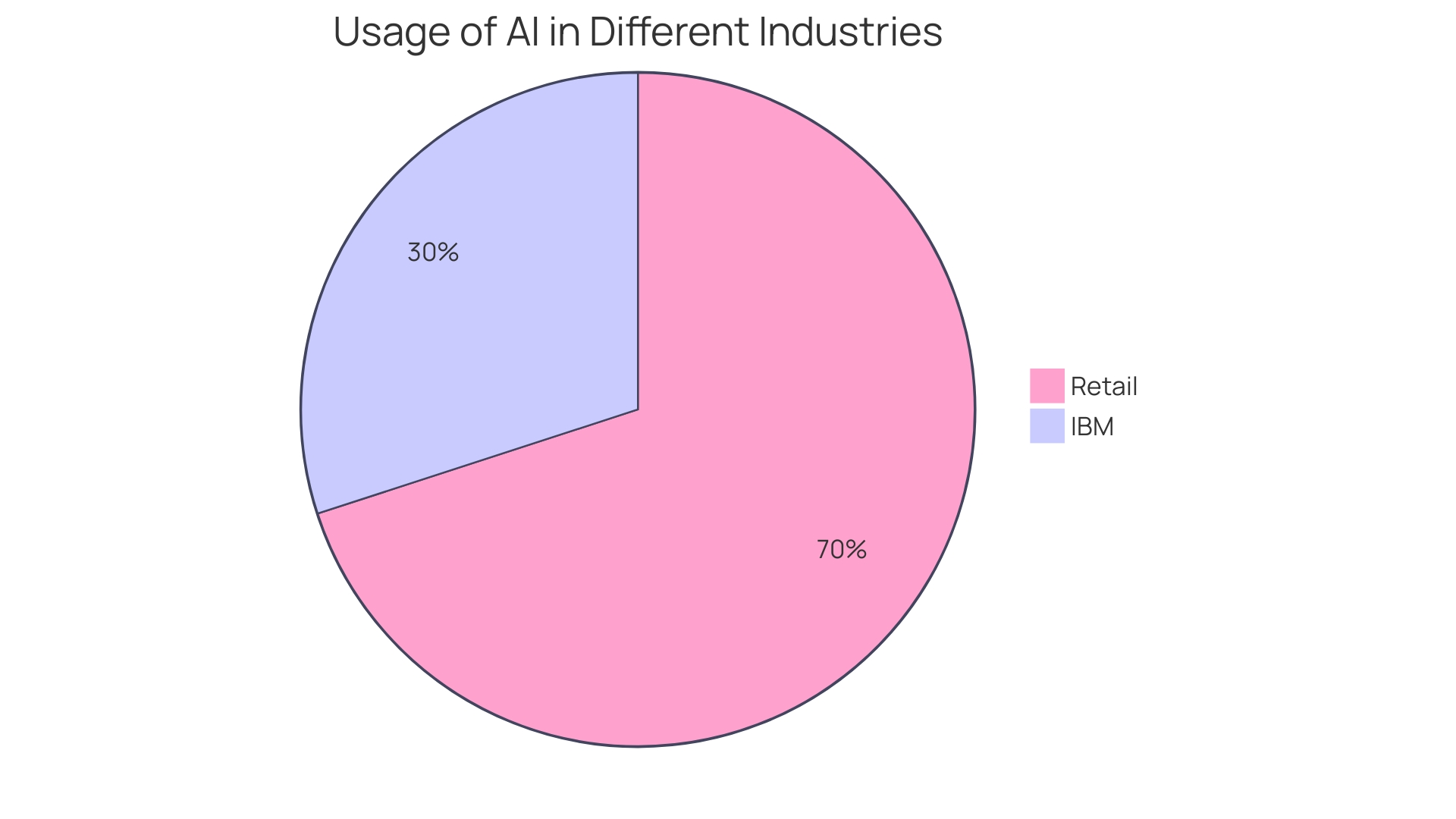
Key Use Cases for Chatbots in E-commerce
Chatbots are transforming the way e-commerce businesses engage with their customers. By handling a high volume of inquiries, chatbots ensure that each customer receives prompt and accurate responses. This technology is not just about answering questions; it's about providing a seamless shopping experience.
With the capability to assist with order tracking and offering product recommendations, chatbots act as a personal shopping assistant to each customer. They can analyze a customer's browsing behavior and purchase history to suggest items that align with their preferences, making the shopping experience personalized and efficient.
For businesses with a global reach, such as a jewelry company operating across continents, chatbots have proven to be invaluable for managing customer support across different time zones. They provide instant support, eliminating the long wait times that could deter customers from completing a purchase. Moreover, in the high-tech industry, chatbots facilitate internal communication among support agents, allowing them to consult experienced colleagues for quick resolution of complex queries, thus enhancing overall customer service.
The investment in chatbot technology is evidently paying off for e-commerce. With 76% of decision-makers witnessing a revenue increase of 11% or more from AI use, the focus on chatbots for customer support, search, and recommendations is well justified. Notably, 88% of users engaged with a chatbot last year, signaling that chatbots are increasingly becoming the norm in customer-business interactions.
These AI-powered assistants are particularly crucial for technical support, where they can guide customers through troubleshooting steps, preventing the frustration that often accompanies technical difficulties.
As the e-commerce landscape evolves, integrating chatbots is a strategic move to satisfy the modern shopper who values quick, accurate information, and personalized attention. The rise of chatbot use in e-commerce aligns with the broader trend of businesses leveraging AI to automate customer service, aiming to automate up to 70% of customer requests. The evidence is clear: chatbots are an essential tool for e-commerce businesses looking to enhance customer satisfaction and streamline their operations.
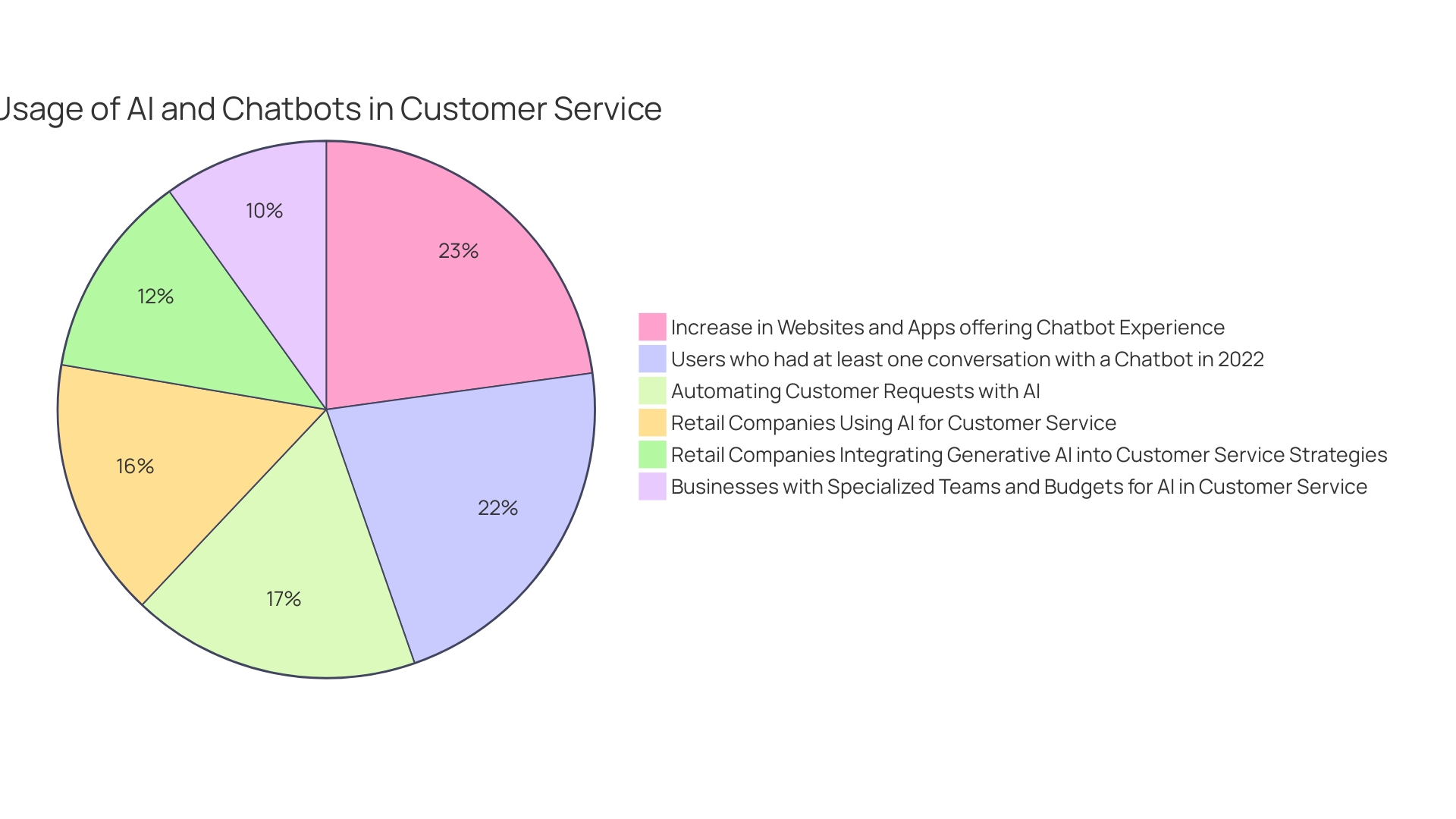
Designing Effective Chatbot Interactions
Crafting chatbot interactions that are both effective and satisfying for customers is a subtle art that hinges on several best practices. For instance, integrating Natural Language Processing (NLP) is not merely a trend but a necessity, enabling chatbots to interpret and engage in natural, conversational dialogue with users. Personalization takes this a step further by tailoring responses to individual user preferences and historical interactions, creating a more intimate and relevant experience.
Moreover, the precision and brevity of chatbot communications cannot be overstated. Responses should be straightforward and digestible, avoiding any potential confusion. And when the complexity of a customer's inquiry surpasses the chatbot's capabilities, a seamless handover to a human agent is essential, ensuring a continuous and supportive customer journey.
These best practices are supported by the compelling statistics that reveal over 63% of retail companies are utilizing AI to augment customer service. With 78% of consumers abandoning purchases after poor service encounters, the urgency for efficient chatbot integration is clear. Additionally, with an 88% chatbot engagement rate among users in 2022 and a 92% surge in websites and apps offering chatbot experiences, the direction toward chatbot optimization is unmistakable.
Embracing these strategies is not just about following a trend; it's about responding to a significant shift in customer service paradigms. As retailers witness the willingness of customers to pay a premium for exceptional service, the implementation of conversational commerce, including chatbots, becomes an intelligent investment. Reflecting on the insights of a product manager with expertise in product strategy, understanding the customer's journey—including their motivations, concerns, and decision-making process—is paramount for any successful chatbot service.
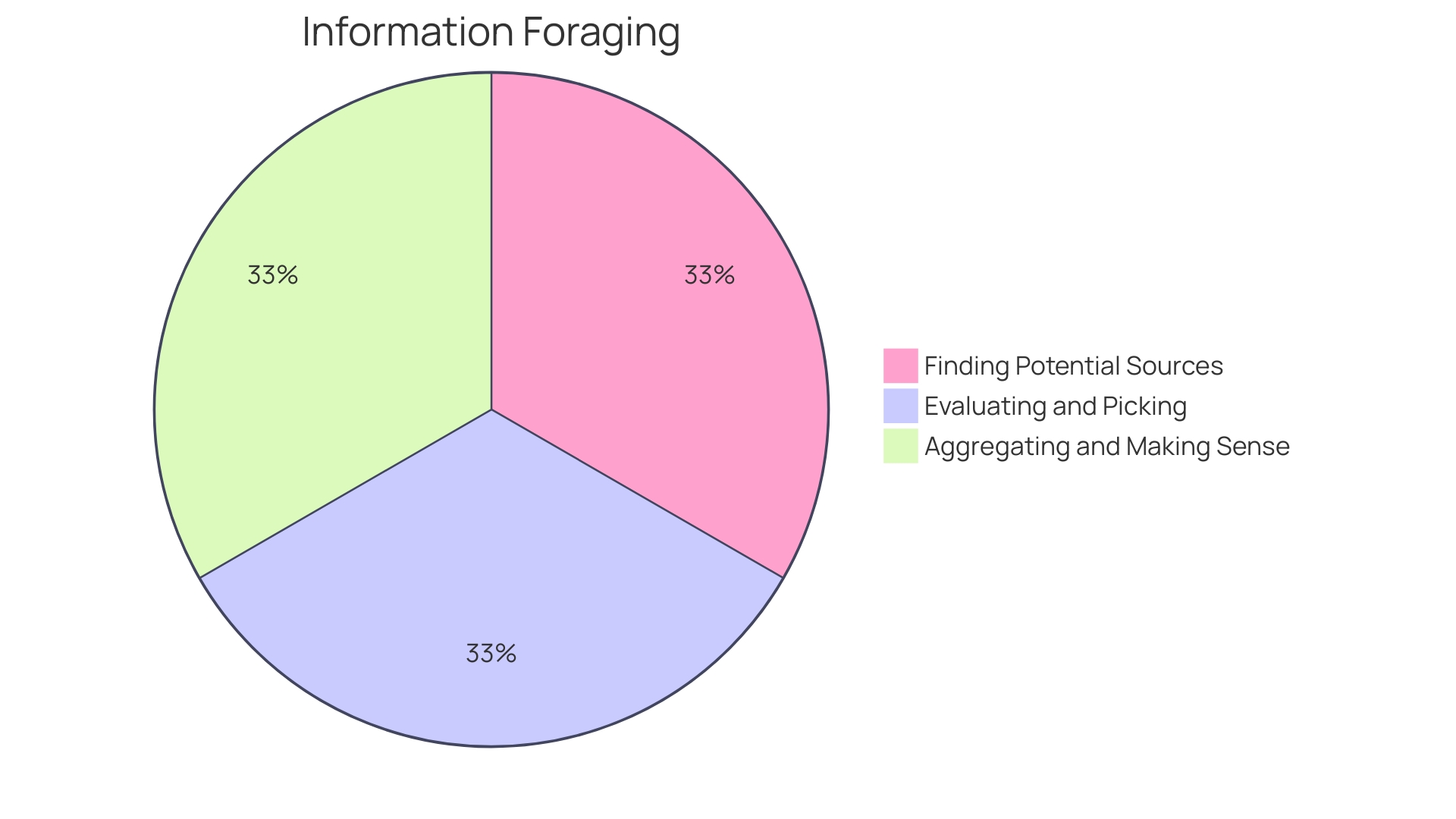
Overcoming Challenges in Chatbot Implementation
Despite the impressive benefits that chatbot technology brings to e-commerce, such as 24/7 availability and instant responses, the journey of integrating chatbots is not without its challenges. Businesses face hurdles such as ensuring chatbots can comprehend complex queries and contexts, technical constraints that may arise when integrating with existing systems, and the need for continual training and maintenance to adapt to changing customer needs and behaviors.
Overcoming language and context understanding issues is critical as chatbots must be adept at interpreting user intent to provide accurate assistance. For instance, a recent integration with a Shopify vendor demonstrated the capability of a ChatGPT chatbot to function as a virtual sales executive, adeptly guiding users through product selection and purchase processes, even offering coupon codes to incentivize sales.
Technical limitations are another concern, as chatbots must seamlessly integrate with various e-commerce platforms without disrupting the existing infrastructure. The continuous evolution of chatbots is necessary to handle an array of tasks and operate in harmony with the complex systems of an e-commerce site.
Maintenance and training are equally important, as evidenced by a report highlighting that 76% of e-commerce decision-makers who invested in AI saw at least an 11% increase in revenue. This underscores the necessity for regular updates and training to refine chatbot interactions, ensuring they remain a valuable asset in a company's digital strategy.
By addressing these challenges with strategic investments in sophisticated chatbot technology, comprehensive testing, and ongoing updates and training, businesses can significantly enhance the customer experience—leveraging AI to not only meet but exceed customer expectations in the digital marketplace.
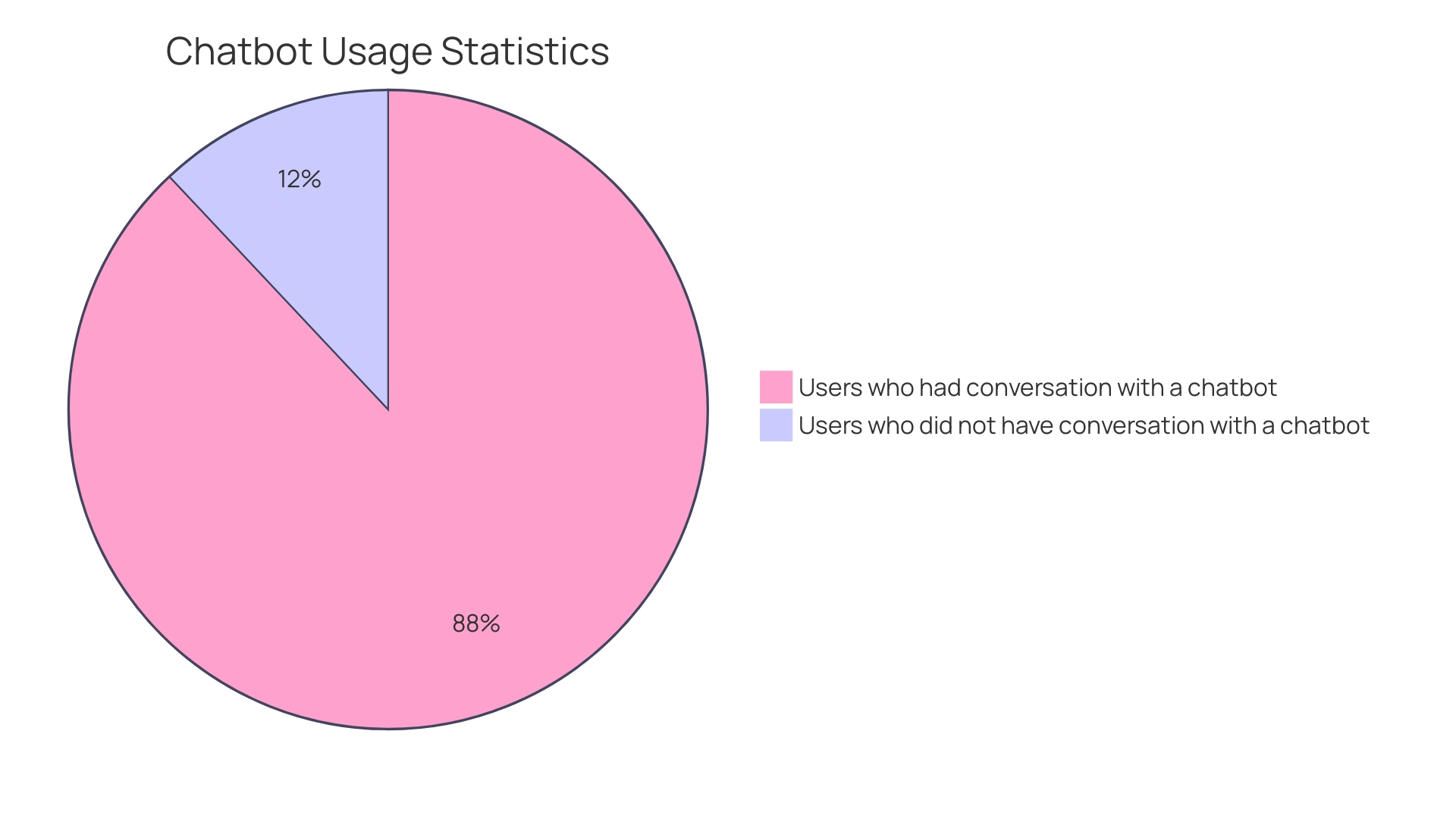
Measuring Success: Key Performance Indicators
Understanding the impact of chatbots on customer satisfaction is pivotal for e-commerce businesses aiming to optimize their customer service. To gauge the efficacy of chatbots, consider tracking these essential KPIs:
- Response Time: Keep an eye on the average duration chatbots take to respond to customer queries. Prompt responses are often synonymous with higher customer satisfaction.
- Customer Satisfaction Score (CSAT): Implement surveys post-interaction to measure customer satisfaction levels with the chatbot service provided.
- Task Completion Rate: Record the proportion of inquiries that chatbots resolve successfully without the need for human intervention.
In an age where chatbot interactions are increasingly common, with 88% of users engaging with a chatbot at least once in 2022 according to Tidio, these KPIs help businesses understand and enhance the customer journey. Globally, the use of AI in customer service is on the rise, with 63% of retail companies employing AI to elevate customer experiences. The statistics indicate that chatbot technology is not just a fleeting trend but a cornerstone of modern customer service strategy, with a staggering 92% increase in businesses offering chatbot experiences recently.
Monitoring these KPIs allows for an assessment of chatbot performance and customer engagement effectiveness. Adjustments can then be made to ensure the AI tools align with the needs and preferences of your diverse customer base, ultimately driving satisfaction and loyalty.
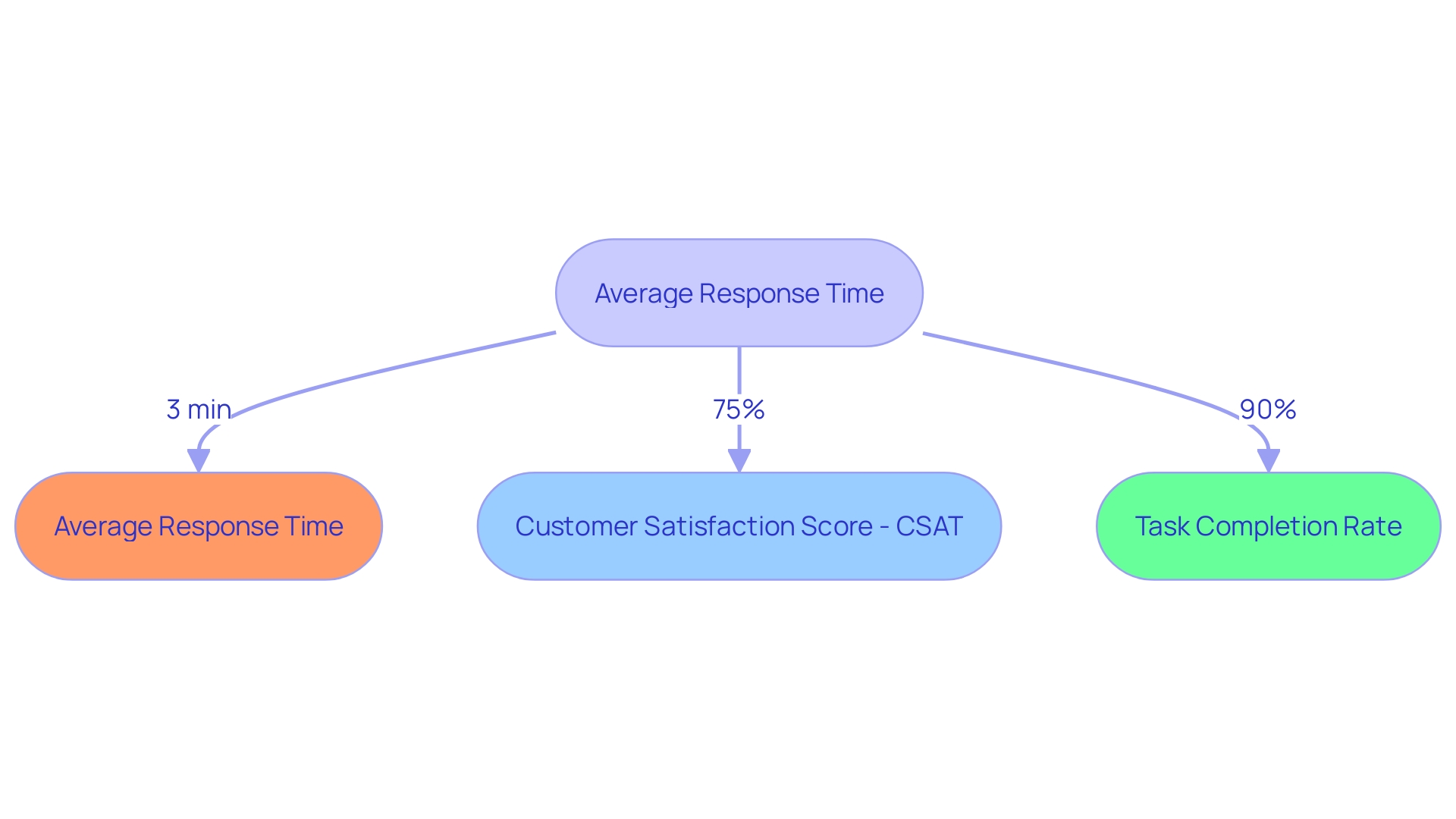
Future Trends and Innovations in Chatbot Technology
E-commerce businesses are recognizing the transformative power of chatbot technology, not only for enhancing customer service but also for streamlining operations. Advanced Natural Language Processing (NLP) is pivotal as it sharpens the bots' capability to decipher and address intricate customer inquiries, leading to more satisfying interactions. Voice-enabled functionality is poised to revolutionize the way customers engage with chatbots, allowing for seamless, hands-free communication.
Moreover, the integration of AI and machine learning propels chatbots into a state of continuous evolution, effectively learning from each interaction to refine their responses and problem-solving skills. For instance, financial service institutions are already implementing AI-powered knowledge assistants tailored to their data-rich environments, ensuring employees have swift access to imperative information, thus expediting decision-making processes.
Retail companies, as highlighted by PwC, are capitalizing on AI to craft personalized shopping experiences, acknowledging that customers are willing to pay more for superior service. The industry is witnessing an uptick in AI investments, with a notable majority of e-commerce decision-makers eager to augment their AI capabilities despite economic uncertainties.
In the context of broader market developments, chatbots stand as a beacon of innovation amidst the anticipated growth in emerging markets such as India, where a burgeoning middle class and urban populace are driving fashion market expansion. Similarly, in regions facing infrastructural challenges like Nigeria, AI-assisted solutions help businesses overcome logistical hurdles and streamline retail operations.
Statistical evidence bolsters the chatbot narrative, with 88% of users engaging in dialogue with chatbots in the past year alone, and the North American market leading with a substantial 40.4% share in chatbot adoption as of 2020. This trend underscores the technology's growing ubiquity and its critical role in enhancing customer experiences across various industries, including the competitive automotive sector, where Canada's DealerAI has introduced a proactive AI chatbot solution.
The future of e-commerce customer service is being shaped by these intelligent, responsive chatbot systems, which not only address the demands for round-the-clock support but also pave the way for more insightful and personalized interactions.
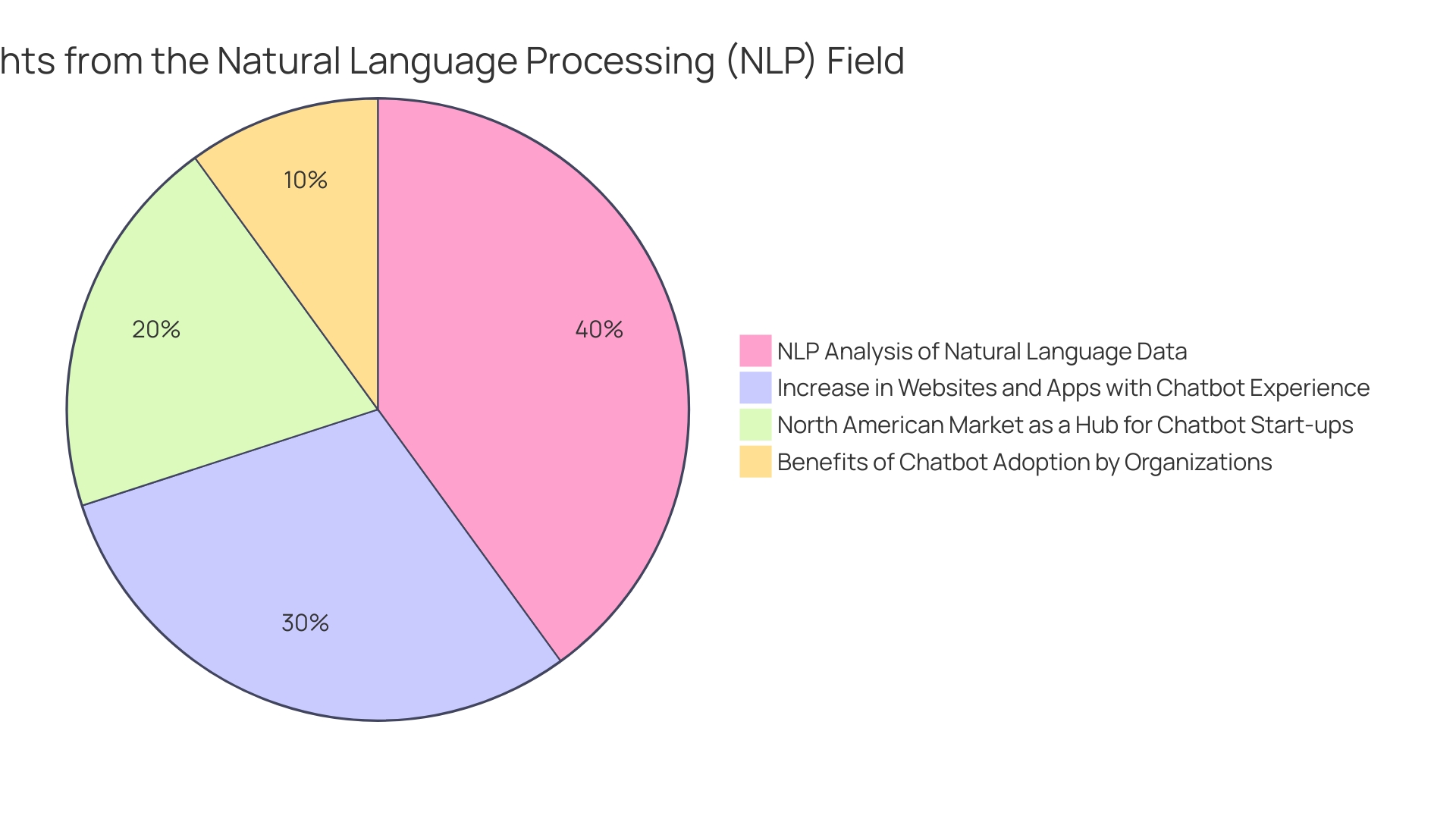
Conclusion
Chatbots have revolutionized e-commerce by providing round-the-clock support and enhancing the customer experience. With over 88% of users engaging with chatbots in 2022, these AI-powered virtual assistants are indispensable. Integration of chatbots has led to a significant revenue increase of 11% for 76% of decision-makers.
By automating up to 70% of customer requests, e-commerce platforms address the demand for instant and personalized customer service. Successful examples show chatbots delivering personalized assistance, streamlining shopping experiences, and reducing wait times for technical support. These integrations are crucial for facilitating 24/7 customer service and retaining customers in the competitive e-commerce landscape.
Effective chatbot interactions require integrating Natural Language Processing (NLP) and personalization. Precision in communication and seamless handover to human agents when needed are essential. Monitoring key performance indicators (KPIs) such as response time, customer satisfaction score (CSAT), and task completion rate allows businesses to assess chatbot performance and customer engagement effectiveness.
Future trends include advanced NLP for more satisfying interactions and voice-enabled functionality for hands-free communication. AI integration enables chatbots to continuously evolve and refine their responses. Chatbots play a pivotal role in crafting personalized shopping experiences and meeting customer expectations.
They are shaping the future of e-commerce customer service, offering intelligent and personalized interactions.
In conclusion, chatbots have become indispensable in e-commerce, providing round-the-clock support, streamlining operations, and enhancing the customer experience. Integration of chatbots leads to revenue increase and improved customer satisfaction. Effective interactions require NLP integration and personalization.
Monitoring KPIs allows for assessment of chatbot performance. Future trends include advanced NLP and voice-enabled functionality. Chatbots are shaping the future of e-commerce customer service.





